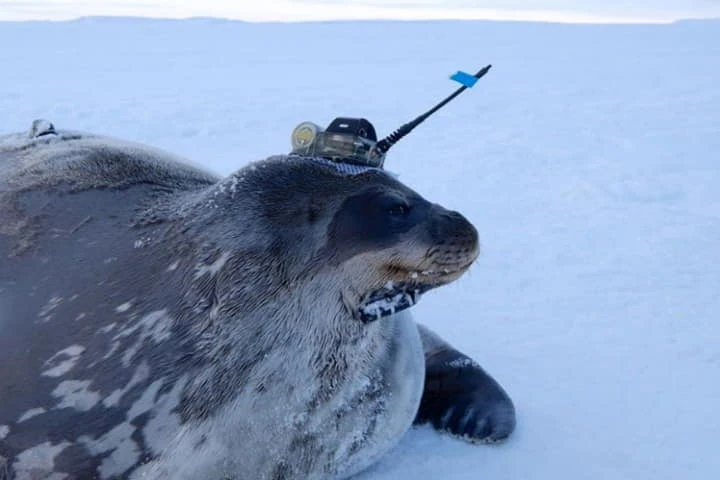Confronted with the difficulty while studying the Antarctic continental shelf with ice attached to the shore, researchers and oceanographers hit upon an innovative idea of using seals with sensors attached to them instead of using a boat for exploration. This was advantageous since these animals had far less problem in these waters as per a report in scitechdaily.com.
The use of these creatures for investigation and its findings was published recently in the journal Limnology and Oceanography.
This area of Antarctica is vital for studying as it is described as one of the most productive regions biologically in the world. The reason for that is the enormous quantity of nutrients that are generated here due to the interplay of ice shelf, ocean and sea ice.
Also read: 2,000 years ago, ancient Arctic dwellers were not just hunter-gatherers but also skilled ironsmiths
Katabatic winds which are strong in the region of East Antarctica increase the production of sea ice in the coastal polynyas – a sphere of open, unfrozen seawater which is encompassed by sea ice. Sometimes outside the polynyas, there is large sea ice attached to the shore, also called landfast ice and this is where many predators like Weddell seals and emperor penguins are found.
In the continental shelf’s biological production, a vital part is played by these sea-ice, ice-shelf water exchanges and ocean, especially when it takes place between deep warm waters which come from off-shelf regions, sea-ice zones that change with the season and coastal polynyas.
There is a need for detailed comprehension of the biological production in the region. For that it was necessary to have more data that takes into account how both surface and deep waters from nearby off-shelf areas infringe on the shelf and mix with local waters.
Here the oceanographers confronted a major problem. The cross-shelf water exchanges and the recurrent variations that take place in it are not understood well enough because observations by ship in continental shelf areas which are covered by landfast ice is tough.
Therefore, for quite some time now, the scientists started to hitch the oceanographic data logging equipment on to marine animals, in particular equipment that records conductivity, temperature and depth (CTD). This information is necessary to find out the attributes of the ocean water in the complete water column, and thereby allow the researchers to evaluate the origin of water.
The study’s lead author Nobuo Kokubun, elaborating on this said: “Previous studies using instruments strapped to migrating southern elephant seals and resident Weddell seals—a deep diving predator—had shown some interesting physical processes in Antarctic areas, but even here, there has barely been anything investigating coastal areas covered by landfast ice.”
Kokubun is an Assistant Professor with Japan’s National Institute of Polar Research.
In order to carry out field study survey the oceanographic conditions in the wintertime and their effects biologically in eastern Dronning Maud Land and western Enderby Land in East Antarctica, the scientists attached CTD-Satellite Relay Data Loggers with the help of glue on the heads of eight Weddell seals for period of seven months, March to September of 2017. The weight of the equipment was 500 grams and size was small, similar to that of a small Rubik’s Cube.
The data communicated through the equipment deployed on the marine creatures helped the scientists to find out that during autumn, low salinity water which is also warm appeared in the subsurface, and as the season proceeded the warm water became deeper.
In tandem with the oceanographic and meteorological modelling, the scientists were able to present that the easterly wind during the autumn which is seasonal leads to a flow of warm surface waters from off-shelf and also probably more prey onto the continental shelf. Going through the recorded diving data of the seals showed that the low salinity and warm water had positive effects on the animals’ foraging behaviour.
Also read: Will dreaded Sharks Help Humans to Fight Covid Pandemic?
In a nutshell, the scientists felt that the physical process which is wind-driven may increase the availability of the prey in the coastal marine ecosystem of Antarctica.
The study also showed the utility and value of the seals with oceanographic sensors attached to them for the exploration of oceanographic and ecological conditions across a very wide range of Antarctic continental shelves covered with landfast ice. Having proved that this is possible, the researchers now want to attempt to estimate the amount of prey and water being transported onto the shelves by this wind- driven process.
Finally, what the scientists hope to achieve is to use the data collected to forecast the response of the coastal marine ecosystem of Antarctica to the changes that are taking place rapidly in the Antarctic sea ice.




















